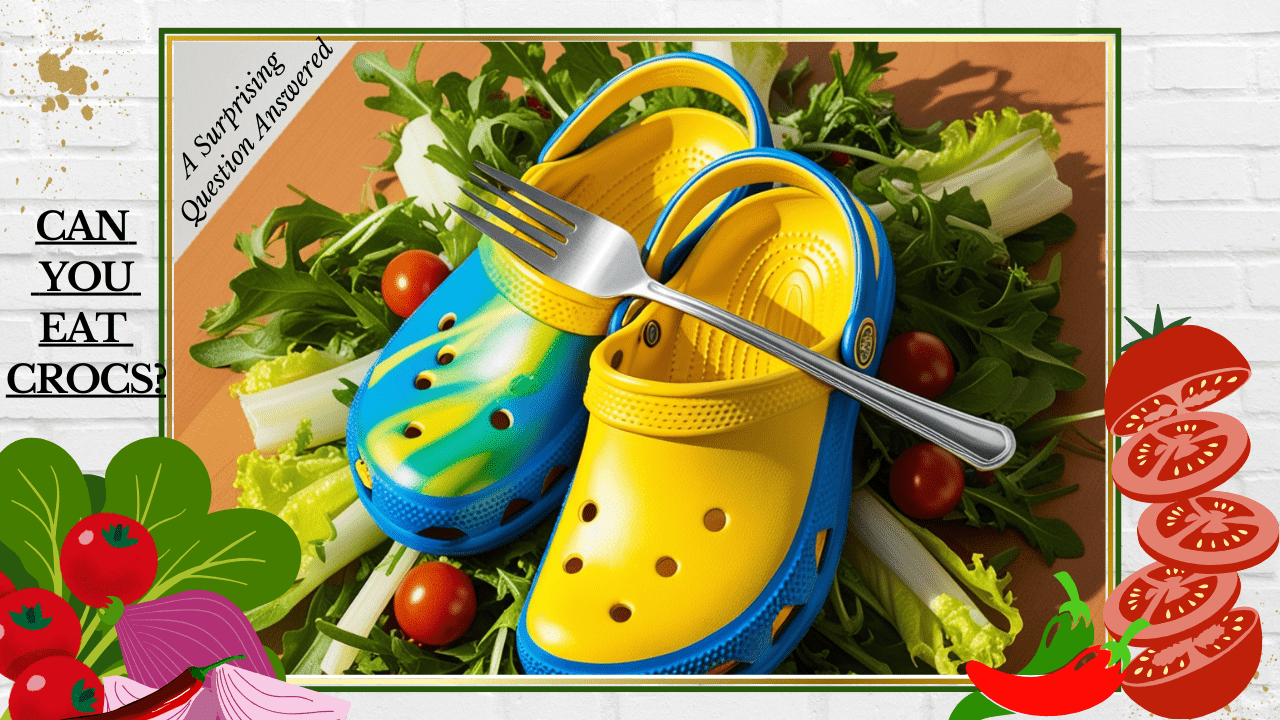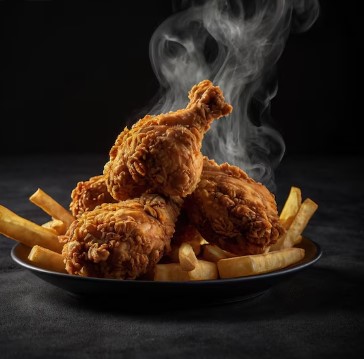In my point of view, Crocs –, not the quirky foam shoes that have become a global sensation – but actual crocodiles. For those wondering, “Can you eat crocs?” the short answer is yes, you can eat crocodile meat, and in fact, it is consumed in various parts of the world. The idea of eating crocodile may seem unusual, especially to those who have never encountered it as a meal option, but it is a genuine source of protein, valued for its lean qualities, flavor, and nutrition. This article will explore everything you need to know about crocodile as food, from its historical significance to how it’s prepared, nutritional benefits, and ethical considerations.
But when people ask, “Can you eat Crocs? They’re usually referring to the rubber shoes that have become famous for their comfort and durability. While the question might seem odd at first glance, it has an interesting background and brings up some important points about survival, safety, and the materials we use in everyday life.
Crocs: What Are They Made Of?
Crocs are made from a material called Croslite™, a proprietary closed-cell resin. It’s not quite plastic, nor is it rubber, but rather a type of foam that’s lightweight, comfortable, and odor-resistant. Croslite provides the signature cushioning and durability that Crocs shoes are known for. While it’s a specialized polymer, Croslite is not considered biodegradable or designed for consumption.
Can You Eat Crocs in a Survival Situation?
The idea of eating Crocs stems from survival discussions. In a dire situation, where food sources are scarce, people sometimes wonder if they could chew on their Crocs to survive. Technically, chewing on Crocs won’t poison you immediately, as Croslite is non-toxic. However, it’s crucial to understand that non-toxic doesn’t mean nutritious or digestible.
Croslite cannot be broken down by the human digestive system, meaning even if you were to swallow a piece of your Crocs, it would pass through your body without providing any nutrients. Eating Crocs would not sustain you in a survival situation, and it could actually cause digestive blockages, leading to serious health issues.
Where Did the Idea of Eating Crocs Originate?
This unusual question gained traction when survivalist forums and blogs debated unconventional survival tactics. Some articles have humorously suggested that, because Crocs are non-toxic, you could eat them if you had absolutely no other options. However, this was never intended as serious advice for actual survival scenarios.
The humor behind this idea also sparked memes and jokes across social media platforms, especially since Crocs’ resilient and rubbery texture makes them seem like something that could survive almost anything, including being eaten.
Comparing Crocs to Actual Edible Footwear
Believe it or not, there are instances where shoes have been made to be edible—but these are crafted from materials like chocolate, fondant, or sugar, typically for novelty or artistic purposes. These edible shoes are designed to be eaten, unlike Crocs, which are designed to protect your feet and withstand harsh conditions, not digestion.
The Real Danger of Eating Non-Food Items
Ingesting non-food items like shoes, plastics, or synthetic materials can lead to serious health risks. The human body is not designed to break down or process polymers like Croslite. Digestive blockages, choking, and damage to internal organs are all potential dangers of consuming non-edible materials. Ingesting non-food objects also introduces the risk of harmful chemicals being released into the body, even if the materials are technically labeled as “non-toxic.”
What Should You Eat in a Survival Situation?
In a true survival scenario, it’s important to focus on gathering actual food sources, such as:
- Edible Plants: Depending on your environment, many plants, fruits, nuts, and seeds can be foraged.
- Insects: High in protein and often abundant, insects like grasshoppers and ants can provide essential nutrients.
- Small Animals or Fish: If you have the means to trap or catch small game or fish, these provide protein and fats essential for survival.
If you find yourself stranded, prioritize hydration, and look for real food sources instead of chewing on your shoes.
The Verdict: Should You Eat Crocs?
While Crocs may be non-toxic, they are not edible. Ingesting Croslite would not provide any nutritional benefit, and could even cause harm. Crocs are designed to be durable, comfortable, and functional for your feet—not for your stomach. So, while the idea of eating Crocs may have its place in humorous survival discussions, the reality is clear: Crocs belong on your feet, not on your plate.
In Conclusion
Eating Crocs may make for an interesting conversation starter, but it’s not a practical solution in any situation. Instead of considering your Crocs as a last-resort food source, remember their true purpose. Protecting your feet during adventures, not feeding you when you’re hungry!
FAQs About Eating Crocs
-
Can you actually eat Crocs?
- Technically, Crocs are made from a non-toxic material called Croslite, so chewing on them won’t immediately poison you. However, they are not designed for human consumption, and eating them could cause digestive problems and offer no nutritional value.
-
Is Croslite safe to ingest?
- Croslite is non-toxic, which means it’s not poisonous if accidentally ingested. However, it’s not digestible, and attempting to eat Crocs could cause digestive blockages or other health issues.
-
Why do people ask if you can eat Crocs?
- This question often comes up in survivalist forums and as part of humorous internet discussions. It stems from the curiosity about whether Crocs, known for their durability, could be used as a last-resort food in a survival situation.
-
Will eating Crocs provide any nutritional benefits?
- No. Croslite cannot be broken down by the human body and does not contain any nutrients. Eating it would not sustain you or provide the energy you need in a survival scenario.
-
Can Crocs be eaten in an emergency or survival situation?
- While the material is non-toxic, Crocs should not be considered a food source in any situation. If you’re in a survival scenario, focus on finding actual food sources like edible plants, insects, or small animals.
- Have people ever actually eaten Crocs?
- While there are no documented cases of someone eating Crocs for survival, the idea has appeared in humorous discussions and memes. In reality, it’s not a practical or safe approach.
-
What could happen if you eat part of a Croc?
- Eating non-food items like Crocs can lead to serious health risks, such as digestive blockages or choking. Since the body can’t break down synthetic materials. They would pass through your digestive system without providing any benefits, potentially leading to complications.
-
What other non-food items are sometimes mistakenly thought of as edible?
- Items like clay, dirt, and even certain plastics are sometimes mistakenly believed to be edible due to myths or survivalist misconceptions. None of these items are suitable for human consumption.
-
Are there shoes made from edible materials?
- Yes, some novelty shoes are made from edible materials like chocolate or sugar. But these are created for artistic purposes or special occasions. Crocs, however, are made from Croslite and are not meant to be eaten.
-
What should you do in a real survival situation?
- In a true survival scenario, it’s crucial to focus on real food sources. Foraging for edible plants, catching small animals, or finding insects are far better options than trying to consume synthetic materials like Crocs. Hydration is also a top priority.
By understanding the limitations of non-food items like Crocs. You can avoid the dangers associated with ingesting them and make smarter choices in survival situations.














